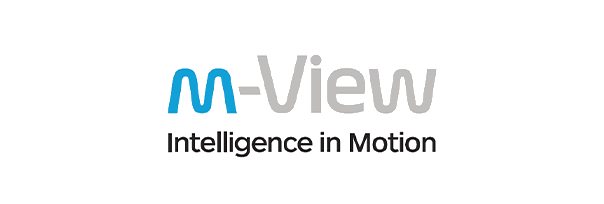5 ways virtual cards help human resources department
Human resource departments tirelessly work as a backbone that supports your company’s overall growth. Every day human resource management teams take care of a wide range of responsibilities, each as important as the other. From payroll and training to workforce planning, they do it all.
Virtual cards are changing the way B2B payments
Over the last few years, the B2B fintech space has seen a major boom in the form of technology that is revolutionizing financial management. The emergence of virtual cards for business is one such development that is spearheading this boom. Virtual payment cards are predicted to be responsible for billions of dollars worth of transactions in the coming years.
Time and cost-effectiveness
Virtual cards are designed to bypass the time and cost constraints that come with physical cards. It takes only a few minutes and some button clicks to issue virtual cards for employees. These cards are also extremely cost-effective. Volopay let's issue as many virtual cards as you want, completely free of cost.
Low risk
The risk factor associated with such cards is also very low. Volopay virtual payment cards, for example, give real-time updates on scrupulous activity. This lets you block or freeze a card before things get out of hand. You can use these cards to maintain only the fund balance you need to spend, therefore eradicating the possibility of overspending as well. Moreover, the security measures Volopay cards come with are at par with a bank, if not stronger.
Sustainable
Virtual cards, by definition, are stored digitally. There is no need for any plastic, paper, or other materials to be used. This means that you can cut down on the waste your company is producing, therefore ensuring a more sustainable approach to business - an aspect that all modern businesses must look to follow.
Issue refunds in minutes
Now that you have a virtual card for every vendor, keeping track of refunds also becomes simpler as your supplier refunds it back to the same virtual card that you used to pay them. This negates the confusion you would normally face when trying to track whether a refund has been processed by a particular supplier or not.
Ways virtual cards benefit the human resource department
HR management often finds itself stuck doing mundane admin tasks that are better suited for automation. All such tasks can be delegated to virtual payment cards so that your HR teams can focus on actual, value-building tasks.
Employee gifts
Virtual cards can also serve as one-time or burner cards that you can use to give gifts or rewards to your employees. Especially during occasions like birthdays, festivals, anniversaries HR teams often have to plan out gifts and rewards, procure them and then send them out to employees. Instead of going through such a long and labor-intensive, manual process HR teams can just use virtual cards as gift cards. This creates a win-win situation where your employees get to choose what gift they want to buy and at the same time your HR team can have a much easier time managing gifts and rewards.
Easy to track expenses
This feature is particularly useful if your company manages employees, freelancers, or contractual employees working remotely. Companies often have to work with freelancers or contractors living in different countries. Making payments out to these entities, is not always an easy task. With virtual cards, HR teams can send out money to foreign internationals without the fear of high conversion rates. Because all transactions made using these cards are recorded in real-time you can maintain close control and visibility over where your money is going and how much you are spending.
Claim reimbursements
Reimbursement is another business expense that takes a lot of time and effort to get done manually. Traditionally, this would involve a multi-step process where HR management receives expense claims, verifies them, gets them approved, reconciles them, and only then rolls out reimbursement. Instead of this entire process, you can just hand out virtual cards with preloaded funds, budgets, and spend limits. This drastically reduces the need for reimbursements and at the same time empowers your employees. Requesting funds, getting approvals, and using these cards, in general is easy.
Payroll
Virtual company cards can also be used to manage payroll, and keep records transparent. These cards are equipped with recurring payments features that can ensure that you pay salaries on time, every time. With Volopay, for example, all you need to do is input payments details, set recurring dates for payment, and let the system work its magic.
Not only does it help manage payroll but virtual expense cards also cancel out the need to record payroll data. No longer do HR teams have to spend hours doing all this manually set the triggers as per which you want your numbers organized. From here Volopay integrates itself with cloud-based HR software and automatically pulls and organizes all payroll information.
Managing expenses
HR teams regularly work with expenses related to hiring and onboarding activities and other administrative tasks. The bigger your company is the higher this expenditure will be and the harder it will get for your HR team to manage them. Tracking, recording, and reconciling these expenses manually is infamous for being a mammoth task,
It takes time, a lot of effort plus the margin for error is always high. Instead of managing expenses manually, you can simply assign virtual cards to each of your HR managers or one card for each channel of expenditure. This way you can track all your expenditures, in real-time, from one unified dashboard with which these cards are connected.
Features to look for in virtual corporate card
Ease of issuing virtual cards
One of the main reasons why virtual payment cards have become so popular is because they’re extremely easy to issue, use and block or freeze. Easy of use is a key selling point for virtual cards, and so if the virtual card provider you are choosing does not allow easy issuing then there’s little point in choosing them. Before getting on board make sure you check what the process of issuing cards is.
Support for employee reimbursements
As we’ve seen in the previous section, reimbursement support is another reason why virtual company cards are becoming the norm. These cards have helped replace the traditional multi-step process that was infamous for coming with a full list of obstacles. From saving time and money to cutting out manual steps, the virtual expense card you choose must come with reimbursement support.
Flexible spend control options
The more accommodating the spend controls on your virtual company card are, the easier it will be to use them. Ideally, you should aim to onboard a card provider that not only has flexible spend controls but, in fact, lets you set these controls as per your needs and requirements. For example, with Volopay you can set detailed, custom spending control parameters for all your card payments.
Automatic expense tracking
Automated, real-time tracking of spending behavior lets you maintain constant visibility over how your funds are being used and in what manner. It also helps you protect your finances against fraudulent activity by identifying it immediately. With traditional cards, you’d have to wait to check your end-of-month statement. However, with virtual cards, automated expense tracking and recording features ensure you get information in real-time.
Integration with your existing software
Most virtual card providers provide accounting integration services. However, the quality of integration is not uniform. Even if some providers do allow syncing, they do so without providing detailed categorization of expenses. Make sure you vet the integration capacities of your card provider before onboarding them. With Volopay, for example, your expenses seamlessly sync with pre-existing accounting software plus the software auto-categorizes all your expenses as per triggers you can custom set.








Trusted by finance teams at startups to enterprises.
Get Volopay for your business
Get started free
Related pages
With corporate virtual cards, you can make marketing expense management easier and get a detailed spend insight.
Create separate virtual cards for each vendor and manage all your online subscriptions easily with virtual credit cards from Volopay.
A business charge card comes with many benefits, such as making large purchases, no debt & interest, perks & rewards.